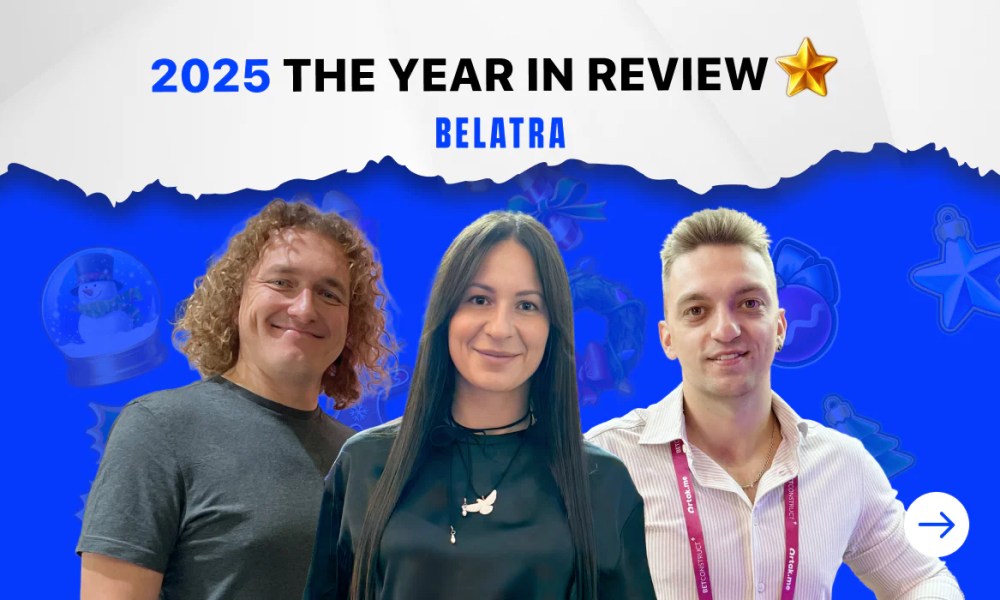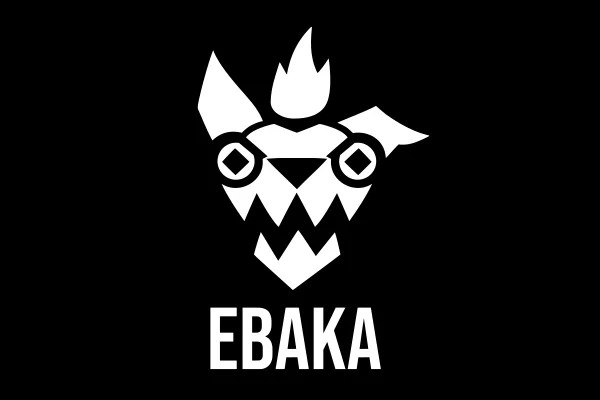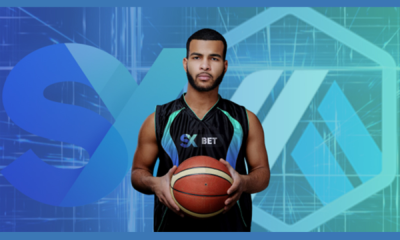Latest News
We are Betinvest: The talent behind the technology

Speaking ahead of ICE 2020, Betinvest COO Max Dubossarsky outlined the company’s plan to launch We are Betinvest, a project which sheds light on the teams of people behind the brand.
What has inspired Betinvest to share the stories of its team members and their many different areas of specialization?
For over 20 years of working in the industry, we have always found that our most valued resource is our team. It is thanks to their professionalism and talent that new products and solutions are created, and different ways to promote our services are developed. It is our employees who are changing the industry with their day-to-day work. And the result of their hard work is reflected in the high market value of our product, the reputation of the company, and the loyalty of our clients. Our team is the main driving force behind the business.
Because we are striving to develop the industry as a whole, we have decided to speak openly about the internal workings of our business. And so, the aim of our project We are Betinvest is to introduce you to the different departments within the company, in terms of the professional and personal qualities of our employees alike. We believe that this will broaden understanding of the complex internal processes of our business: at what stage of a project are different teams involved, what issues do they deal with, and what is their overall contribution? With this project, we hope to raise awareness of all the job descriptions in the gambling industry amongst our followers on social media and show them that Betinvest is all of us, and each and every one of us.
Where can we follow these stories and how will you share them? Can you tell us which department will be first up?
The We are Betinvest project will be launched in February, straight after ICE London, and can be followed on our official Facebook and LinkedIn profiles. Every team of specialists will be featured in the publication series, starting with an introduction to the team at the very heart of our sports betting business: the traders. We hope that readers will find this interesting and informative.
Follow us on social media and give us your feedback. We’d love to hear from you!
How important is it that companies hire candidates who are the right fit for the team?
Of course, it’s very important that everyone fits in, and does what they do best and what they’re passionate about. So, as well as having a thorough selection process, we do our best not to lose our professionals when they decide they want a change of direction: we help them do so within the company. Each of our employees is able to develop not just within their own job role, but also to change specializations and departments.
In terms of recruitment, let’s take as an example our team of traders. We have a special training program and system of career progression within the company for new employees. But from the outset, potential traders must have a good working knowledge of maths and the theory of probability, and they need to enjoy sport and have a deep understanding of certain sports in particular. When part of an experienced team, all of this knowledge will be transformed into a professional skillset. But in this line of work, a love of sport is a real necessity.
Each and every one of our employees is valued, not just as professionals in their area and as individuals, but as members of the team. That’s why it’s also important to us that new employees become part of the Betinvest family, share our values and corporate culture, and stay with us for as long as possible.
What does Betinvest do to cultivate a productive environment to allow its talented specialists to thrive?
A large part of our lives is spent at work, and we understand the importance of corporate culture, and an office environment that facilitates productive work and recreation. I also mentioned earlier that we always listen to our team’s wishes to learn and develop, and we provide opportunities for them to fulfil their potential in a variety of projects within the company. This has a direct effect on satisfaction levels.
Studies have shown that people are more productive at work and take their work more seriously if they get on well with their colleagues. We facilitate this by organizing team building events – both for department teams and interdepartmental. Friendly relations within a company break down barriers, increase efficiency, and make our time at work more enjoyable.
An important part of the work carried out by our HR department is the professional development of our team. So, as well as employee benefits which include insurance and access to a gym, we offer our employees extra training through professional courses, workshops, and training sessions.
And, of course, we make sure the office has everything it needs so that it is both a comfortable working environment and well suited for recreational time.
Can you define the Betinvest culture in less than 140 characters? How does this translate to a top-quality product and service for clients?
We place great importance on values such as flexibility, openness, innovation, and professionalism.
This is reflected in and defines our products and services. With our experience in the industry and the range of sports betting solutions we offer, we are a single entry point into the gaming industry for our clients.
Belatra Games
From ‘Mummyverse’ to Crash Games: Belatra Reviews a Landmark 2025

Editor’s Take
Why this matters: Belatra has been a steady hand in the slots world for a long time, but 2025 marked a distinct shift in strategy. By entering the Crash vertical with Goose Boom Bang and winning big at SiGMA Africa, the studio is clearly pivoting to capture the high-growth, high-frequency players in emerging markets. They are no longer just a “classic slots” developer; they are diversifying the portfolio to ensure relevance in regions like LatAm and Africa.
The Full Story
Belatra Games, the specialist online slots developer, has issued a strategic review of its 2025 operations, celebrating a 12-month period defined by entry into new game verticals, significant franchise expansion, and high-profile industry recognition.
The year was characterized by a dual strategy: deepening engagement in established markets while aggressively expanding its content portfolio to suit local preferences in emerging territories.
Portfolio Evolution: Crash and Battles 2025 saw Belatra move beyond its traditional slot roots. The company made its debut in the high-demand Crash game vertical with the launch of Goose Boom Bang, a title designed to tap into the fast-paced gameplay preference of younger demographics.
Additionally, the studio introduced a fresh game concept with the launch of Battles, a new format unveiled for the first time in 2025, with further development planned for 2026.
The ‘Mummyverse’ Expands For fans of classic slots, the highlight of the year was the aggressive expansion of the Mummyverse. Belatra nearly doubled the size of this franchise over the year, making it the most extensive game universe in their entire catalog.
The developer also focused on B2B localization, releasing a number of exclusive bespoke games created specifically for selected operator partners to meet specific local market tastes.
Awards and Recognition The company’s strategic shifts were validated by industry accolades. Belatra secured over 30 nominations throughout the year, with standout wins including:
-
Best Slot Provider (awarded by BitStarz).
-
Most Played Game of 2025 for Make It Gold at the SiGMA Africa Awards.
-
Player’s Pick Award.
Management Commentary Misha Voinich, Head of Business Development at Belatra, commented on the studio’s momentum:
“This year has truly defined who we are as a studio – ambitious, creative and focused on building long-term partnerships. We’ve expanded our universes, launched new ones and entered exciting new markets that will all help us carry this momentum into the New Year.”
The post From ‘Mummyverse’ to Crash Games: Belatra Reviews a Landmark 2025 appeared first on Gaming and Gambling Industry Newsroom.
BMM Testlabs
‘Chaos and Soul’: Ebaka Games Plots Global Expansion After Viral Launch

Editor’s Take
Why this matters: The “Instant Game” vertical (Crash, Plinko, Mines) is becoming crowded, but Ebaka Games is cutting through the noise with a distinct brand personality. By securing BMM Testlabs certification so quickly after launch, they are signaling to Tier 1 operators that despite their “chaotic” marketing vibe, the math underneath is solid and compliant. The backing of industry veteran Dmitry Belianin also adds immediate commercial credibility to the startup.
The Full Story
Ebaka Games, the fledgling studio that promises to bring “chaos and soul” to the iGaming sector, has outlined an aggressive growth strategy for 2026 following a landmark launch period in late 2025.
The studio, which officially debuted in November, reports that its initial rollout reached more than five million people worldwide. The launch saw its portfolio go live with the operator Menace, serving as the initial testbed for its mechanics and “Ebaka modes.”
The Product: Instant Games with Personality Ebaka is bypassing traditional slots to focus on the high-growth vertical of fast-paced, instant-win games. Their initial lineup includes:
-
Plinko
-
Mines
-
Tower
-
Limbo
-
Crash
Differentiation is achieved through unique mascots and signature gameplay tweaks designed to offer high win potential and distinct visual identities, moving away from the generic interfaces often found in this genre.
Regulatory Milestone Crucially for its 2026 roadmap, Ebaka Games has confirmed it has secured certification from BMM Testlabs. This accreditation validates the fairness and integrity of its RNG (Random Number Generator) and game engines, removing a major barrier to entry for regulated markets. With this certification in hand, the studio plans to launch with a number of “major brands” in the coming year.
Management Commentary Vitalii Zalievskyi, CEO of Ebaka Games, commented on the studio’s unorthodox approach:
“It’s only been a few weeks since we first introduced Ebaka Games to the world. The feedback has been breathtaking, and it vindicates the decision for us to take a different path to the rest of the industry. You don’t need huge marketing budgets to grab people’s attention if you are building something truly innovative.”
Industry Backing The studio describes itself as being “created by players for players” but boasts significant industry firepower in its corner. The team includes Dmitry Belianin, a well-known figure in the sector who is the co-founder of Blask and Menace, as well as Managing Partner at Already Media.
The post ‘Chaos and Soul’: Ebaka Games Plots Global Expansion After Viral Launch appeared first on Gaming and Gambling Industry Newsroom.
ARC
Racing Meets Nightlife: SBK Backs ARC’s New ‘Friday Night Live’ Series

Editor’s Take
Why this matters: British racing has a well-documented demographic problem; its core audience is aging. “Friday Night Live” is a direct attempt to fix this by blending high-stakes racing with the “experience economy” (DJs, nightlife vibes) that appeals to Gen Z and Millennials. Bringing SBK on board—a mobile-first, app-only sportsbook—is a perfect demographic fit, while the Racing Post adds the necessary credibility to ensure the actual racing product remains the focus.
The Full Story
Arena Racing Company (ARC) has unveiled the strategic commercial lineup for its upcoming Friday Night Live series, confirming SBK as the Exclusive Betting Partner and The Racing Post as the Official Media Partner.
Set to launch in January 2026, Friday Night Live is a new initiative created in collaboration with youth-focused events company INVADES. The series is designed to overhaul the traditional race day experience, featuring fast-paced fixtures under floodlights, DJ sets, and significant entertainment elements sandwiched between races.
The Commercial Deal
-
SBK: As the exclusive betting partner, the Smarkets-owned sportsbook will take naming rights and on-course branding for all 35 races. Crucially, these races will be broadcast live on mainstream television via ITV Racing as well as Sky Sports Research.
-
The Racing Post: As the Official Media Partner, the publication will provide content, coverage, and promotion across its digital platforms, aiming to bridge the gap between established racing purists and the new audience ARC hopes to attract.
A High-Stakes Experiment The series is not just a marketing exercise; it carries serious sporting weight. Each of the five scheduled nights will feature over £200,000 in prize money. The fixtures will rotate across three of ARC’s all-weather tracks: Wolverhampton, Newcastle, and Southwell.
Management Commentary David Leyden Dunbar, Group Director of Commercial Strategy at ARC, was clear about the target audience:
“We have been very clear that one of the aims of Friday Night Live is to engage the next generation of racing fans… Both [partners] have shown real enthusiasm to work with us… as well as using the platform that these fixtures will offer them to also engage with more established racing and sports fans.”
Adam Baylis, Marketing Director at SBK, added:
“Friday Night Live [is] a fresh and engaging concept that brings a new energy to British racing. SBK has always been built around sport… our focus is on enhancing the live race day experience in a fun, social and responsible way.”
The 2026 Schedule The series kicks off immediately in the new year:
-
9th Jan: Wolverhampton
-
6th Feb: Newcastle
-
20th Feb: Southwell
-
20th March: Wolverhampton
-
27th March: Newcastle
The post Racing Meets Nightlife: SBK Backs ARC’s New ‘Friday Night Live’ Series appeared first on Gaming and Gambling Industry Newsroom.
-

 affiliate marketing6 days ago
affiliate marketing6 days agoSOFTSWISS 2025: 45% Game Portfolio Growth, LatAm Extensive Expansion and Flagship iGaming Trends Report
-

 B2B6 days ago
B2B6 days agoXpoint secures new growth funding to supercharge geolocation innovation for real money gaming
-

 Aviator6 days ago
Aviator6 days agoTKO: SPRIBE names UFC fighter Valter “The Clean Monster” Walker as Aviator brand ambassador
-

 Brand Activation6 days ago
Brand Activation6 days agoEsportes da Sorte strengthens brand presence during New Year’s Eve celebrations across four Brazilian capitals
-

 B2B6 days ago
B2B6 days agoHoli Primed For Emerging Markets Via New QTech Games Partnership
-

 B2B6 days ago
B2B6 days agoPlay’n GO games now live with Ivy Casino in the UK
-

 Alex Leese6 days ago
Alex Leese6 days agoPronet Gaming’s New Global Chapter Begins at ICE 2026
-

 BGaming4 days ago
BGaming4 days agoBGaming and Jon Vlogs Spread Christmas Joy with Charity Initiative





















